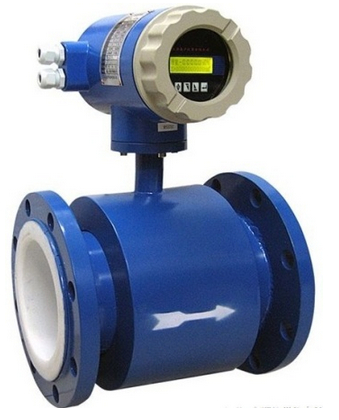Sewage treatment pipeline flowmeter selection
With the country's emphasis on environmental protection, more and more enterprises or units have established sewage treatment links. Sewage treatment requires a large amount of instrumentation support to complete, this article mainly introduces wastewater treatment
It has a very long history in the field of flow metering, and it has a unique advantage in the field of sewage treatment, because the general sewage treatment plant will use the flow meter.
To calculate the influent or effluent flow.
Because the impurities contained in the sewage are relatively complex, particles, impurities, oil, and the like may be mixed together. In order to reduce the pollution caused by the environment, it is necessary to measure, treat, and control the sewage, sludge, and the like. In general, there are three flow meter products to choose from.
Generally applicable to conductive liquids with conductivity greater than 5μS/cm. The maximum pressure of the medium is 4 MPa, and the temperature range of the medium is -60 to 180 °C. It has high measurement accuracy, large range ratio (up to 1000:1), no pressure loss in the system, and many additional functions. The straight pipe sections are 5D and 2D. The electromagnetic flowmeter sensor has the highest protection level up to IP68 (submersible type), and has three types of products: ordinary type, explosion-proof type and intrinsically safe type.
The electromagnetic flowmeter can be installed on any pipe, but the axis of the electromagnetic flowmeter measuring electrode must be horizontal and perpendicular to the pipe centerline. The sensor of the electromagnetic flowmeter must be installed on a pipe that does not generate gas, and the liquid must be filled with the pipe.
If the flow is insufficient, consider adding a vertical pipe section or using a small-diameter electromagnetic flowmeter to increase the pressure in the process piping and increase the flow rate and flow rate.

Second, the throttle device
Standard throttling devices include standard orifice plates, standard nozzles, and venturi nozzles. Non-standard throttling devices include 1/4 round nozzles, double orifice plates, and round orifice plates. Different throttling devices have different limits Reynolds numbers. The minimum Reynolds number calculated from the minimum flow must be greater than the limit Reynolds number of the selected throttling device, at which point the flow coefficient is constant, which is the basic condition. Then, which type of throttling device is finally selected according to the allowable pressure loss required by the process and the minimum straight pipe section before and after the throttling device. In general, the upstream and downstream straight sections are 15D and 5D, respectively.
In general, the following differential pressure values ​​are recommended.
Low-pressure gas - when the differential pressure range is 1~4kPa, 1.6kPa should be used; when the liquid-differential pressure range is 16~40kPa, 25kPa should be used; medium and high pressure gas and steam - the differential pressure range is 40~100kPa, 60 kPa is used.
The throttling device is generally installed on a horizontal pipe. If it is to be installed on a vertical pipe, the flow of gas, saturated steam, and wet gas should be from top to bottom; the flow of liquid must be from bottom to top.
The throttling device must be used with a differential pressure transmitter or a differential pressure flow transmitter. The measuring piping system is complicated, and the flow coefficient of the original design is changed as the orifice of the throttle device is gradually worn. As a result, the measurement error is increased. Changes in fluid density and viscosity can also cause an increase in measurement error.
Third, ultrasonic flowmeter
It is suitable for homogeneous liquids and high flow rates that can transmit ultrasonic waves. The medium temperature range is -10~100 °C, and the medium pressure is not limited. It has a wide range ratio, is not affected by the viscosity and density of the fluid, and can measure strong corrosive media. The straight pipe sections are 10D and 5D.
Ultrasonic flowmeter probes are required to be mounted tightly to the pipe wall without air bubbles and sand. There are four ways to install the probe: V method, Z method, N method, M method. The V method is a standard installation method, the Z method is suitable for large diameter measurement, and the N method and M method are suitable for small diameter measurement. The roughness and scale of the inner wall of the pipeline and the inclusion of particles and bubbles in the medium have a great influence on the accuracy of the flowmeter.
Because the installation of the ultrasonic flowmeter is very convenient, it is preferred to use such products in the technical transformation of many sewage treatment plants. For the external clamp type, it is not necessary to open or cut the original process pipe to install. Use, and the accuracy level is also good.
The method of wax loss originated in the Spring and Autumn Period. The bronze ban of the Spring and Autumn Period unearthed from the Chu Tomb no. 2 of Xiasi in Xichuan, Henan province is the earliest known wax loss casting. The four sides and sides of the bronze ban are decorated with carved moire pattern. There are 12 vertical carved animals around the bronze ban, and 10 vertical carved animal feet under the bronze ban. The carving patterns are complicated and changeable, and the shape is gorgeous and solemn, which reflects that the wax loss method has been relatively mature in the middle of spring and Autumn period. After the Warring States, Qin and Han dynasties, the wax loss method became more popular, especially during the Sui and Tang dynasties to the Ming and Qing dynasties, the wax loss method was mostly used in casting bronzes.
Investment Casting,Lost Wax Casting,Steel Investment Casting,Stainless Steel Investment Casting
Tianhui Machine Co.,Ltd , https://www.thcastings.com